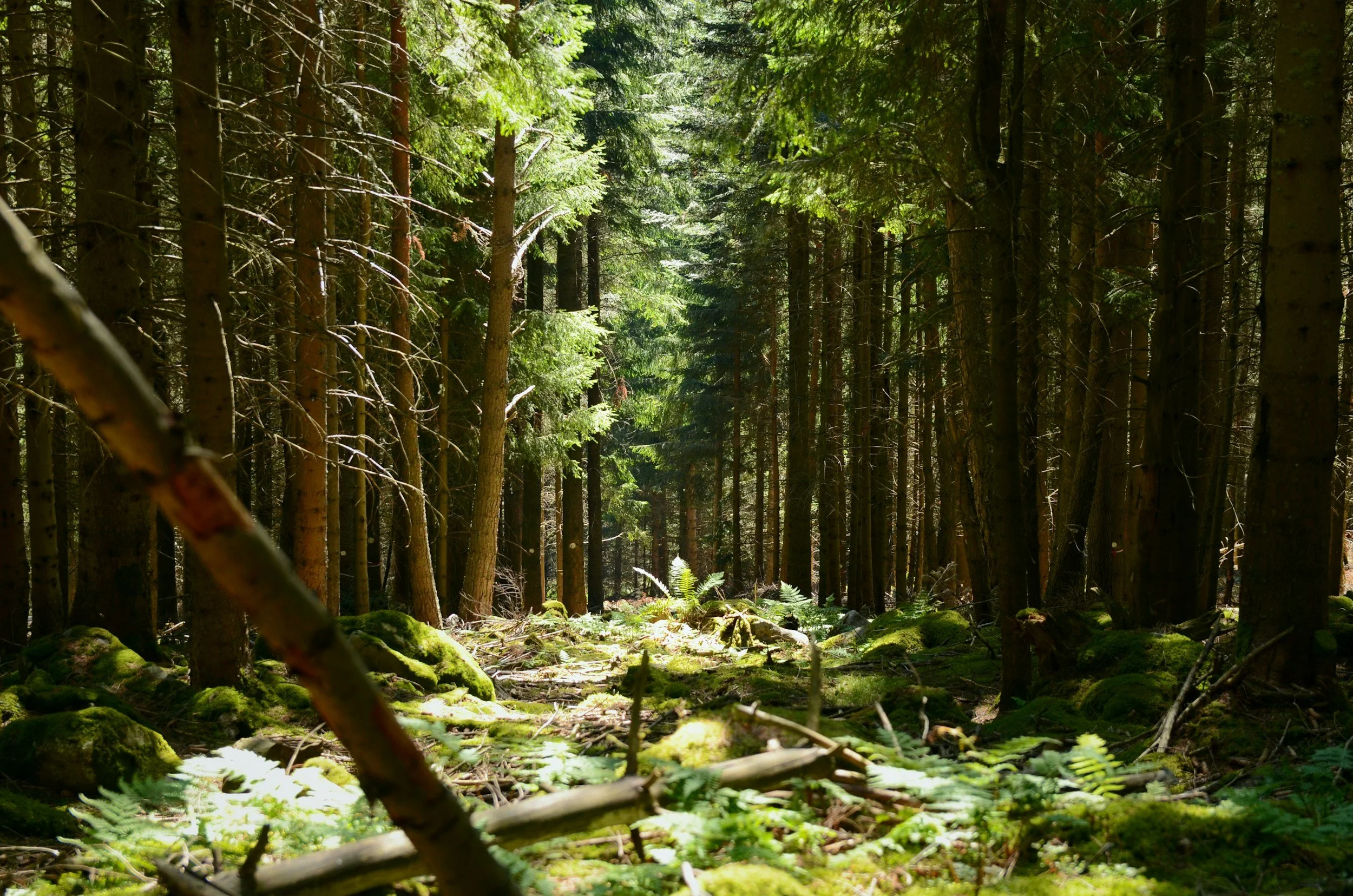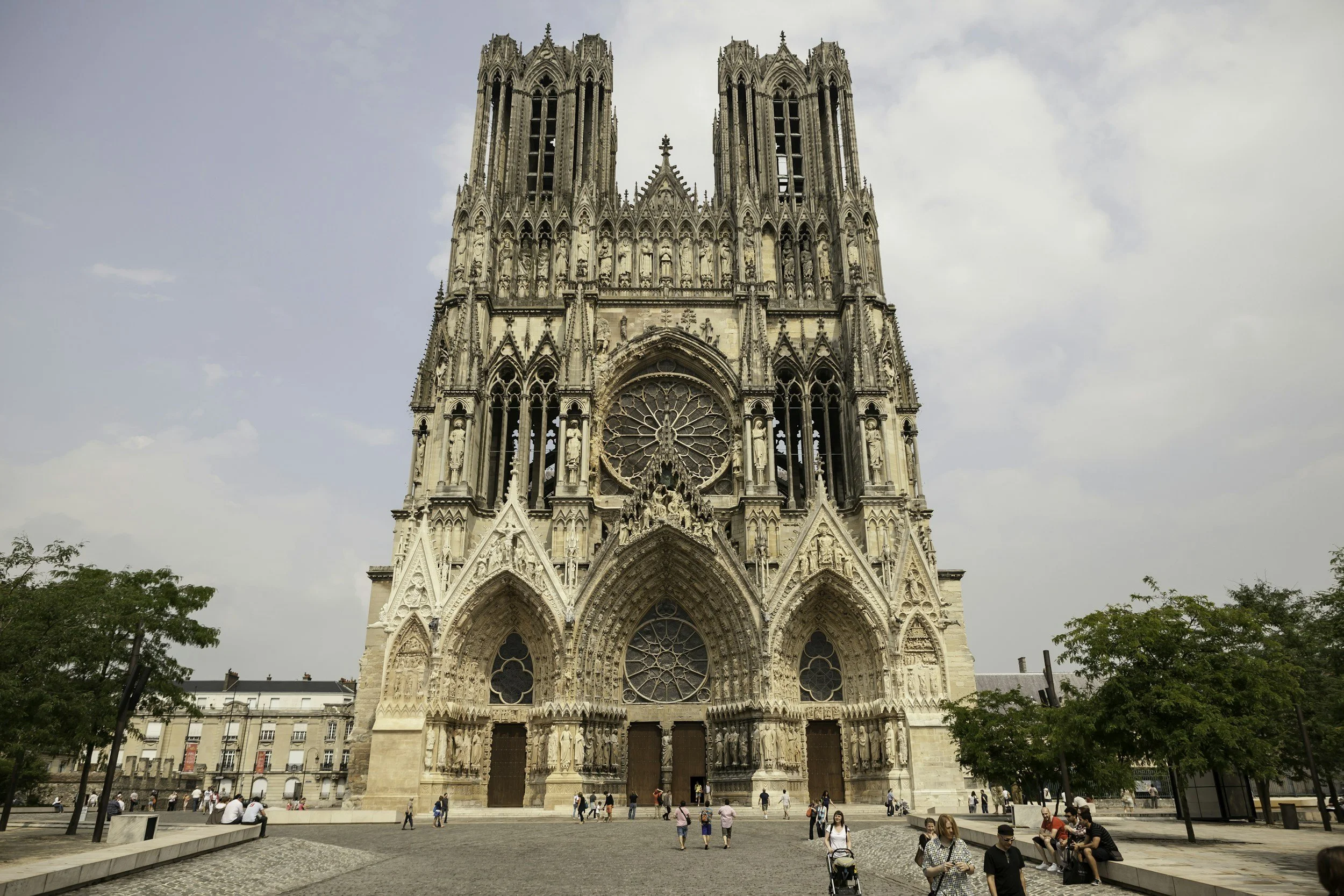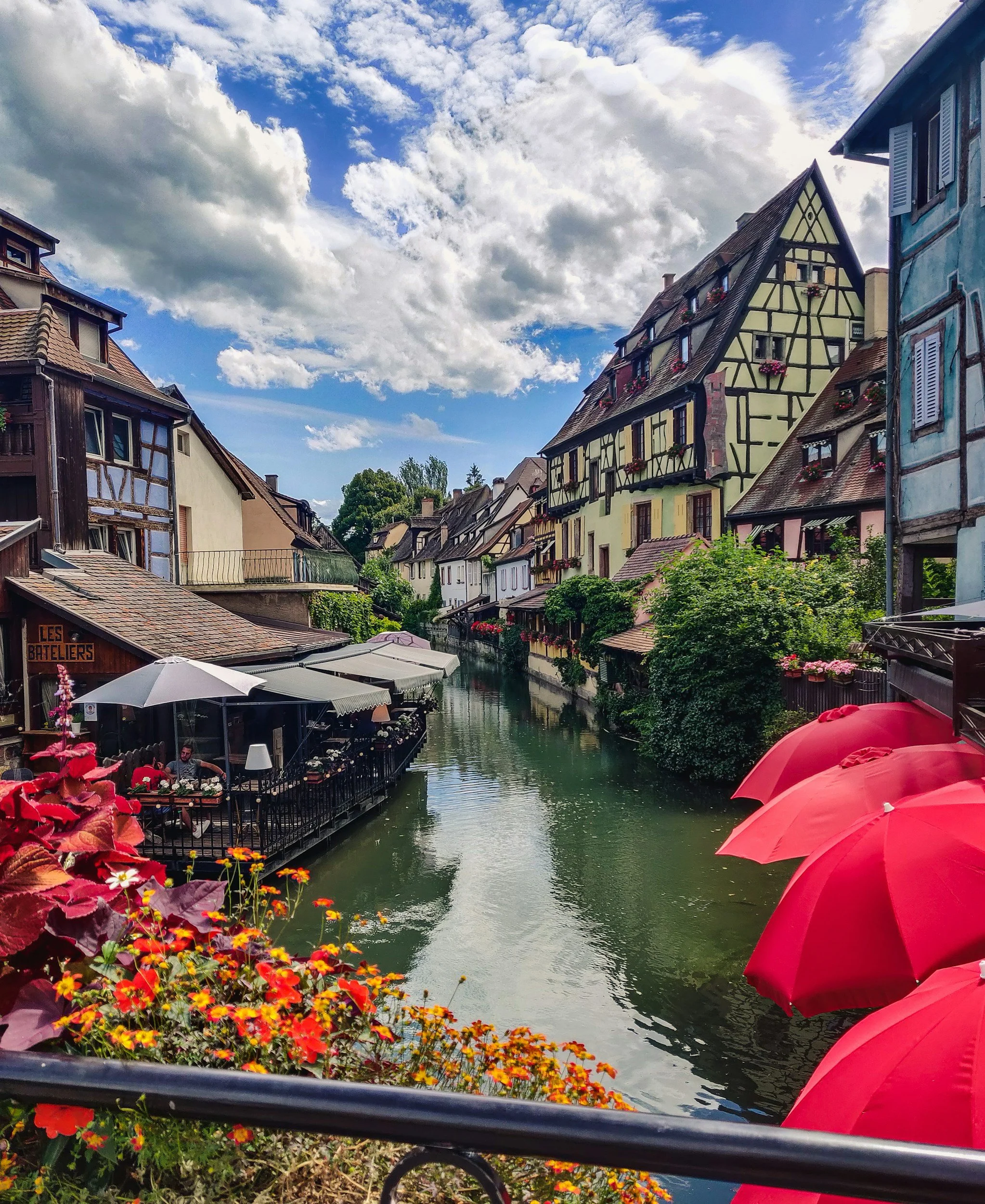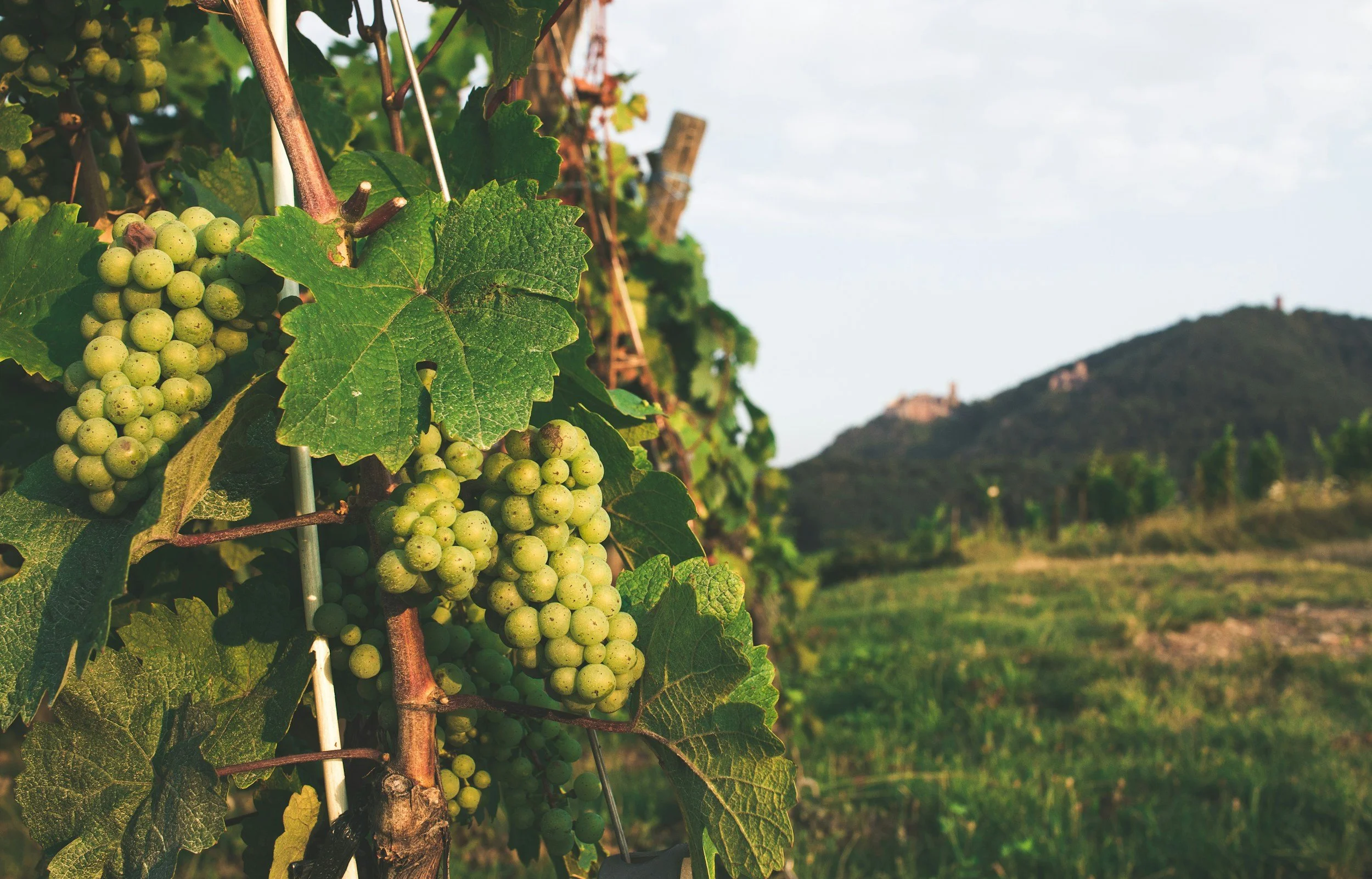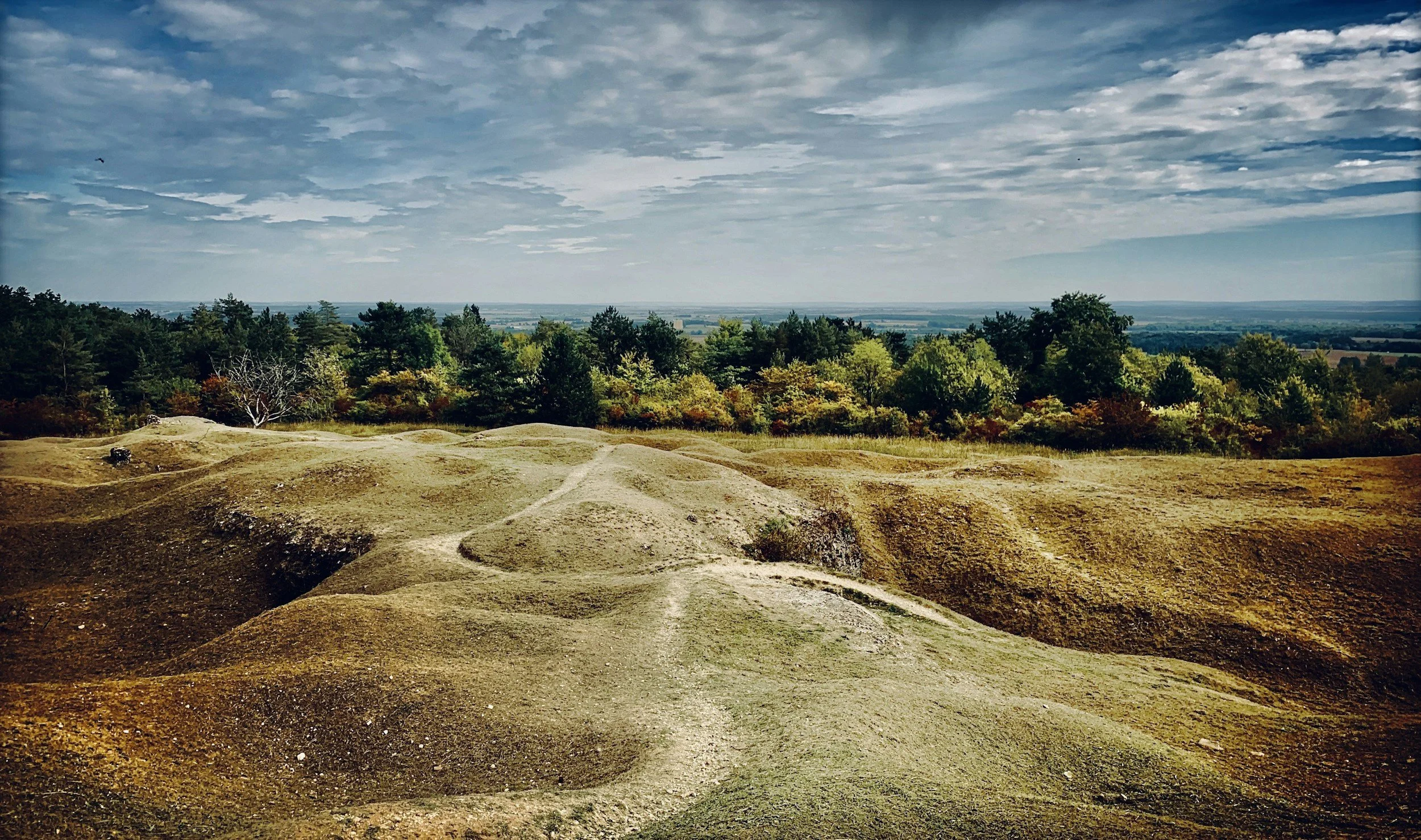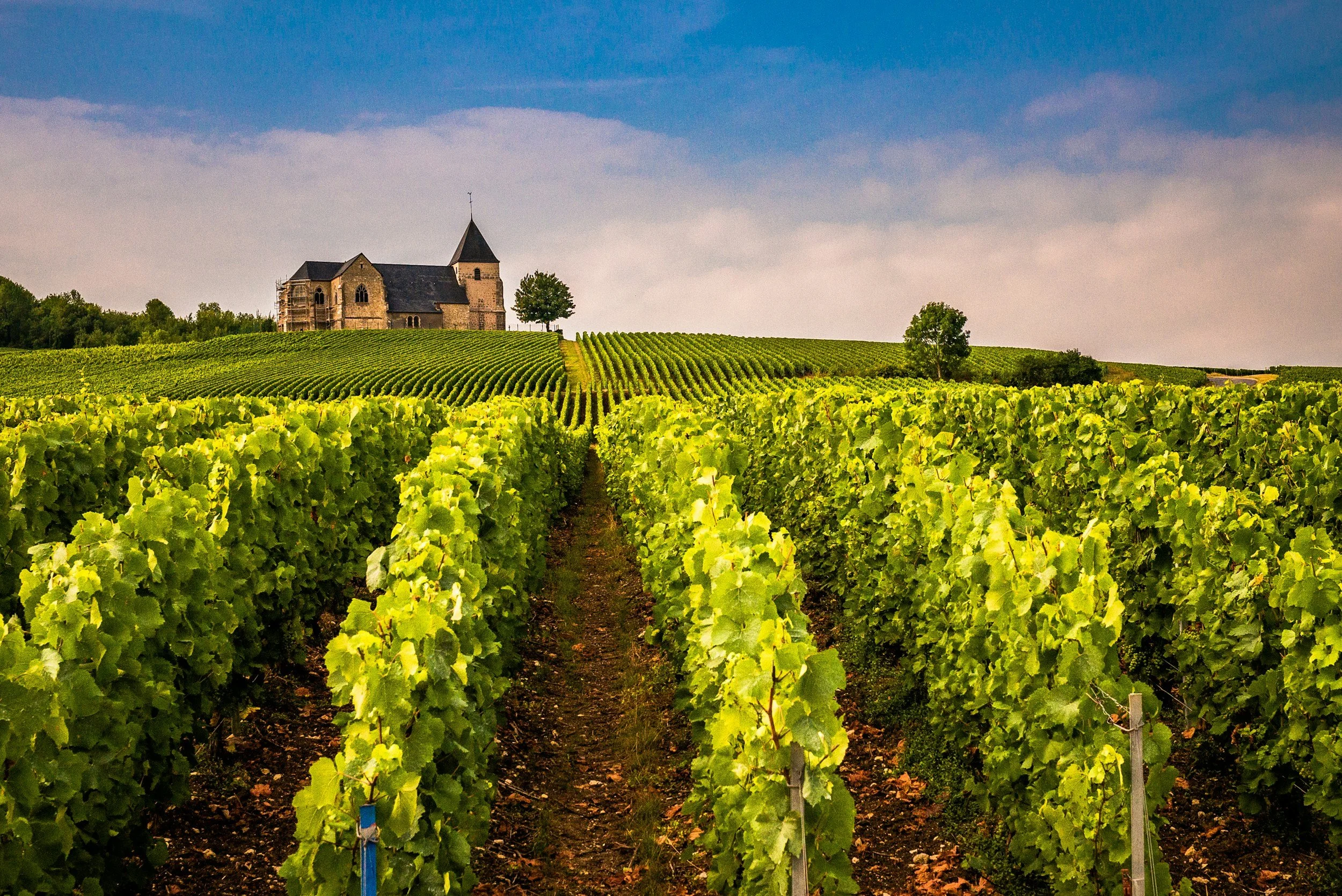
Filming in Grand Est
Grand Est unites French and Germanic influences across Alsace, Lorraine, and Champagne, offering diverse backdrops from medieval to modern. Strasbourg’s Grande Île combines half-timbered houses with the soaring Notre-Dame Cathedral, while Colmar’s canals resemble a storybook setting. Metz’s Gothic Saint-Étienne Cathedral glows with Chagall’s stained glass, and Reims and Épernay reveal Champagne’s heritage through vast chalk cellars beneath vineyards. The Vosges Mountains contribute forests, lakes, and ski slopes, while the Moselle River winds through fortresses, meadows, and rolling countryside.
Grand Est supports a wide range of productions, from period pieces and romance films to culinary series and cross-border narratives. Its Franco-German architecture allows it to double for settings in Germany, Austria, or Switzerland, while Champagne’s underground cellars create atmospheric locations for mysteries and documentaries. The forests and peaks of the Vosges and Ardennes provide striking natural backdrops for adventure stories and nature programs, enhancing the region’s versatility.
BARAMON coordinates with bilingual film commissions, arranges access to Champagne’s wine cellars, and negotiates with local councils for filming in historic districts. We secure multilingual crews, advise on accurate cultural representation, and facilitate cross-border productions with Germany, Luxembourg, and Switzerland, making Grand Est a seamless hub for international projects.

